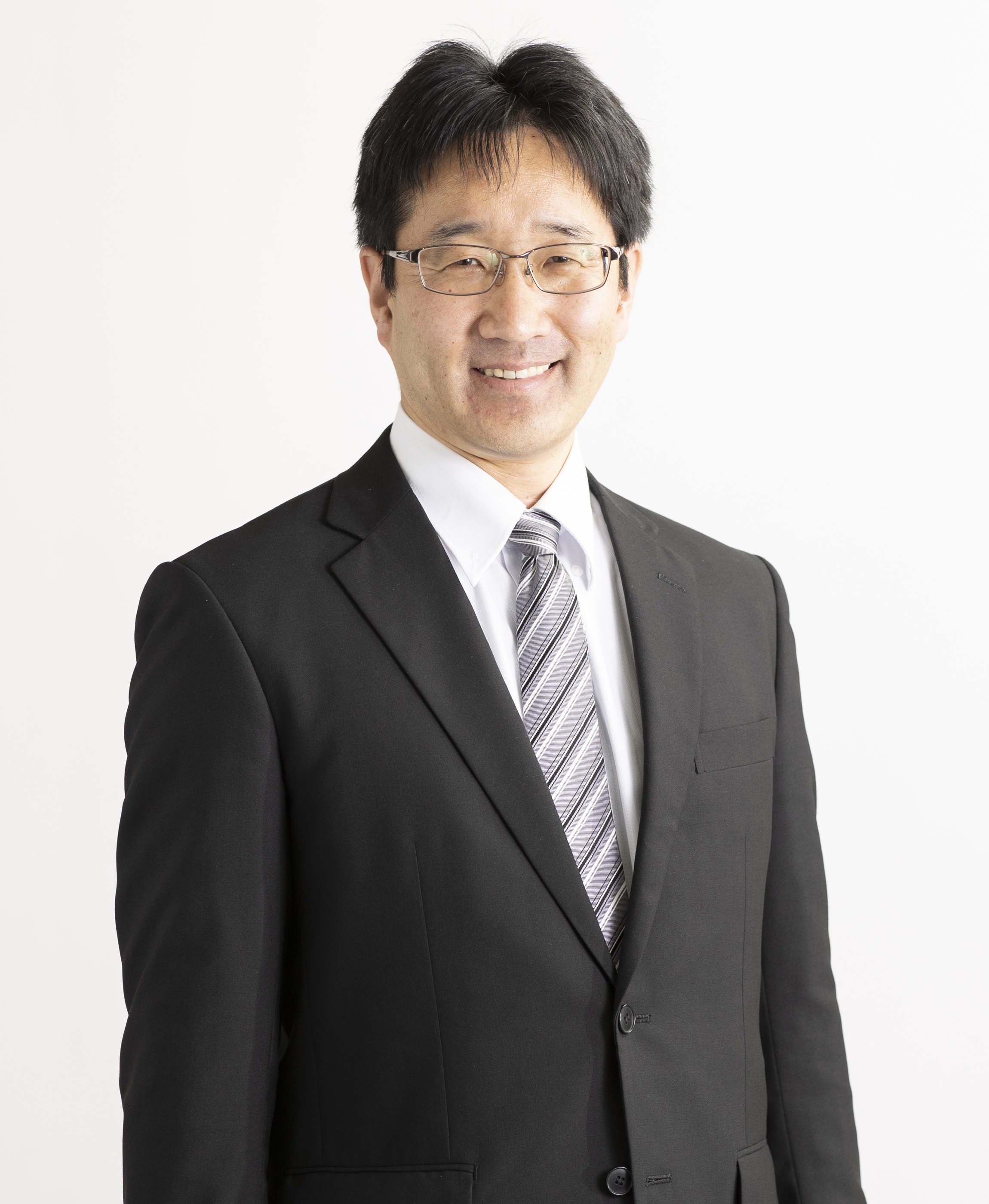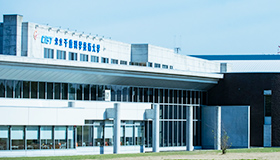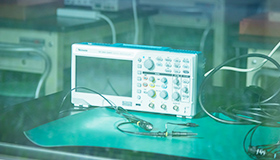准教授・博士(工学):田中 久暁

| 所属 | 応用化学生物学科 |
|---|---|
| 学位 | 准教授・博士(工学) |
| 研究室 | E124 |
| 電話 | 0123-27-6067 |
| ホームページ | https://sites.google.com/view/cist-tanakalab/ |
研究業績
学部担当科目
オプティクス、応用化学生物学セミナー
大学院担当科目
分子光エレクトロニクス
経歴
| 平成10年3月 | 名古屋大学工学部応用物理学科卒業 |
| 平成12年3月 | 名古屋大学大学院工学研究科応用物理学専攻博士前期課程修了 |
| 平成15年3月 | 名古屋大学大学院工学研究科応用物理学専攻博士後期課程修了 |
| 平成15年4月 | 名古屋大学大学院工学研究科応用物理学専攻 助手 |
| 平成16年4月 | 名古屋大学大学院工学研究科マテリアル理工学専攻 助手 |
| 平成19年4月 | 名古屋大学大学院工学研究科マテリアル理工学専攻 助教 |
| 平成29年4月 | 名古屋大学大学院工学研究科応用物理学専攻 助教 |
| 令和4年9月 | 名古屋大学国際高等研究機構 助教(兼任)(令和6年3月まで) |
| 令和6年4月 | 公立千歳科学技術大学理工学部応用化学生物学科 准教授 |
専門分野
物性物理学、有機固体、電子スピンサイエンス
現在の研究テーマ
導電性高分子トランジスタの開発・評価、有機半導体へのキャリアドーピングと新機能開発
所属学会
応用物理学会、日本物理学会、電子スピンサイエンス学会
主な著書及び解説
著書・解説
主な論文
- 田中久暁、竹延大志、「導電性高分子の熱電物性」、次世代熱電変換材料・モジュールの開発 ―熱電発電の黎明― 第Ⅱ編第2章5節 pp. 120-130、シーエムシー出版 2020年3月5日.
- 田中久暁、竹延大志、「ウェアラブル熱電素子の実現に向けた導電性高分子の熱電物性解明」、機能材料, Vol.41 (3), 9-20 (2021).
- 田中久暁、竹延大志、「プラスチックを用いた熱電変換素子 -温度差を用いて発電するフレキシブルな電源の実現に向けて-」、クリーンエネルギー, 29 (7), 30-36 (2020).
主な論文
- H. Tanaka*, S. Ito, T. Matsui, T. Takenobu*, “Facile and controllable chemical doping of conducting polymers with an ionic liquid dopant”, Appl. Phys. Express 17, 031002-1-4 (2024).
- S. Ito, K. Kanahashi, H. Ohta, H. Ito, T. Takenobu*, H. Tanaka*, “Structure and thermoelectric properties of electrochemically doped polythiophene thin films: Effect of side chain density”, Appl. Phys. Lett. 119, 183304-1-6 (2021).
- H. Tanaka*, S. Kawamura, P. Sonar, Y. Shimoi, T. T. Do, T. Takenobu*, “Highly efficient microscopic charge transport within crystalline domains in a furan-flanked diketopyrrolopyrrole-based conjugated copolymer”, Adv. Funct. Mater. 30, 2000389-1-10 (2020). 2000389-1-10 (2020).
- H. Tanaka*, K. Kanahashi, N. Takekoshi, H. Mada, H. Ito*, Y. Shimoi, H. Ohta, T. Takenobu*, “Thermoelectric properties of a semicrystalline polymer doped beyond the insulator-to-metal transition by electrolyte gating”, Sci. Adv. 6, eaay8065-1-8 (2020).
- H. Tanaka*, A. Wakamatsu, M. Kondo, S. Kawamura, S. Kuroda, Y. Shimoi, W. -T. Park, Y. -Y. Noh*, and T. Takenobu*, “Microscopic observation of efficient charge transport processes across domain boundaries in donor-acceptor-type conjugated polymers”, Commun. Phys. 2, 96-1-10 (2019).
- K. Kang, S. Watanabe, K. Broch, A. Sepe, A. Brown, I. Nasrallah, M. Nikolka, Z. Fei, M. Heeney, D. Matsumoto, K. Marumoto, H. Tanaka, S. Kuroda, and H. Sirringhaus*, “Two-Dimensional Coherent Charge Transport in Highly Ordered Conducting Polymers Doped by Solid State Diffusion”, Nat. Mater. 15, 896-902 (2016).
- H. Tanaka*, S. Nishio, H. Ito, and S. Kuroda, “Microscopic signature of insulator-to-metal transition in highly-doped semicrystalline conducting polymers in ionic-liquid-gated transistors”, Appl. Phys. Lett. 107, 243302-1-5 (2015).
- H. Tanaka*, M. Hirate, S. Watanabe, and S. Kuroda, “Microscopic Signature of Metallic State in Semicrystalline Conjugated Polymers Doped with Fluoroalkylsilane Molecules”, Adv. Mater. 26, 2376-2383 (2014).
- H. Tanaka*, M. Hirate, S. Watanabe, K. Kaneko, K. Marumoto, T. Takenobu, Y. Iwasa, and S. Kuroda, “Electron spin resonance observation of charge carrier concentration in organic field-effect transistors during device operation”, Phys. Rev. B, 87, 045309-1-7 (2013).
- H. Tanaka*, M. Kozuka, S. Watanabe, H. Ito, Y. Shimoi, K. Takimiya, S. Kuroda, “Observation of field-induced charge carriers in high-mobility organic transistors of a thienothiophene-based small molecule: Electron spin resonance measurements”, Phys. Rev. B 84, 081306-1-4 (R) (2011).
- H. Tanaka*, S. Watanabe, H. Ito, K. Marumoto, S. Kuroda, “Direct observation of the charge carrier concentration in organic field-effect transistors by electron spin resonance”, Appl. Phys. Lett. 94, 103308-1-3 (2009).
- H. Tanaka*, S. Kuroda, T. Yamashita, M. Mitsumi, and K. Toriumi, “ESR studies of the spin dynamics in quasi-one-dimensional iodo-bridged diplatinum complex Pt2(n-pentylCS2)4I”, Phys. Rev. B 73, 245102-1-12 (2006).
- H. Tanaka*, K. Marumoto, S. Kuroda, T. Manabe and M. Yamashita, “ESR detection of induced spin moments in halogen-bridged mixed-metal complexes Ni1-xPdx(chxn)2Br3”, J. Phys. Soc. Jpn. 71, 1370-1375 (2002).
- K. Marumoto*, H. Tanaka, S. Kuroda, T. Manabe and M. Yamashita, “Induced spin moments in quasi-one-dimensional halogen-bridged mixed metal complexes of nickel and palladium”, Phys. Rev. B 60, 7699-7702 (1999).







